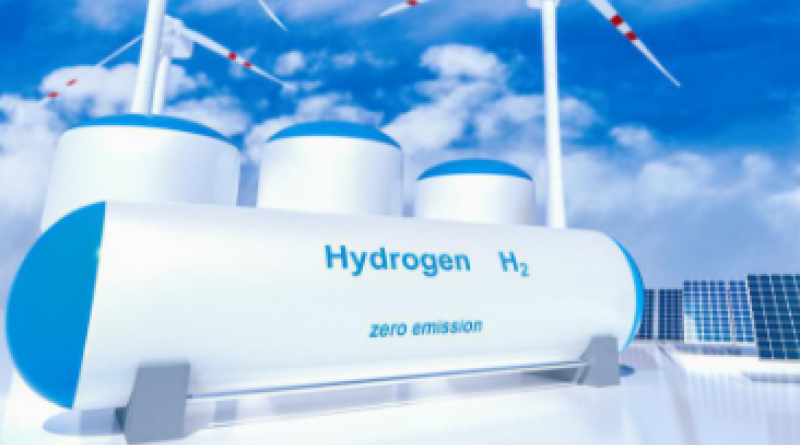Blue Vs. Green Hydrogen: Which Will The Market Choose?

As U.S regulators and industry leaders mull how to consider introducing hydrogen into the nation’s energy supply mix, they’re faced with a choice that sounds more like a decision pondered by the hosts of one of TV’s many home fixer-upper shows – should they go with blue hydrogen or green hydrogen, and what combination of the two will create the right mix?
The answers to those questions will likely have a great impact on the speed with which the U.S. economy makes the transition to a zero-carbon future and the cost of getting there.
Today about 99% of the hydrogen produced for industrial use – in refineries and manufacturing plants – is so-called “gray” hydrogen. Gray hydrogen principally is derived from natural gas, and its production results in the production of large volumes of CO₂, nine parts CO₂ for every one part hydrogen. Creating more environmentally friendly “blue” hydrogen, requires capturing that CO₂ and disposing of it in some manner, such as deep underground, or using it in some beneficial manner, such as in advanced oil recovery.
Green hydrogen on the other hand is produced via electrolysis, the process of separating water into hydrogen and oxygen. When the electricity used in the process comes from renewable sources, such as wind or solar, the result is a zero-carbon hydrogen. At a cost of about $6/kilogram, green hydrogen is the most expensive form of hydrogen to produce.
Today, green hydrogen is two to three times more expensive than blue hydrogen, according to a December 2020 report by the International Renewable Energy Agency. However green hydrogen costs are expected to decrease in the next several years, with improved electrolysis technology and the scaling up of that technology to industrial levels of production.
“The cost of alkaline electrolyzers made in North America and Europe fell 40% between 2014 and 2019, and Chinese-made systems are already up to 80% cheaper than those made in the West,” the report states. The IREA predicts that green hydrogen could be produced for between 8 cents/kg and $1.6/kg in most parts of the world before 2050.
“This is equivalent to gas priced at $6/MMBtu to $12/MMBtu, making it competitive with current natural gas prices in Brazil, China, India, Germany and Scandinavia on an energy-equivalent basis, and cheaper than producing hydrogen from natural gas or coal with carbon capture and storage.”
Pros and cons of green and blue
Hydrogen experts differ on the rate at which blue and green hydrogen should be introduced into the U.S. energy mix, although most agree that there needs to be a transition period in which blue hydrogen, which is cheaper and whose production is more easily ramped up to a commercial scale, should be relied on to provide a bridge to an economy in which the zero-carbon green hydrogen is predominant.
“There are challenges to producing green hydrogen at large scale today,” Andy Sarantapoulas, a vice president of the international industrial gas and engineering company Linde LIN +3%, said in an email statement. In addition to gas produced through electrolysis, Linde also characterized gas produced from a renewable feedstock, such as landfill gas, as green.
“Renewable electricity is still often subsidized by local or state governments and is not always available as baseload operations,” he said.
Sarantapoulas said gray, green and blue hydrogen would all be part of the hydrogen energy mix in the future. “The rate of growth of the blue and green hydrogen will solely depend on the demand for those products, driven by the market demand, production costs, and government regulations,” he said.
“In the end it all comes down to who’s paying for it,” Nico Bouwkamp, technical program manager at energy consulting firm Frontier Energy, said in an interview. “Green hydrogen is a great opportunity but it will take some time to develop.”
Bouwkamp represents Frontier on the California Fuel Cell Partnership industry/government collaboration aimed at expanding the market for hydrogen fuel-cell powered vehicles. California has led the nation in its embrace of the use of hydrogen as a vehicle fuel. The state has mandated that 100% of new passenger cars and trucks sold in-state be zero-emission vehicles by 2035.
California’s aggressive climate targets present an opportunity for other states such as Texas, which also have the potential to become big hydrogen consumers, to experiment with their mix of the various colors of hydrogen, before becoming locked in to single technology because of government mandates, he said.
“You have more flexibility in figuring out how to make it work financially and making the business case for it to be sustainable. You may start out with 20% renewable or low-carbon hydrogen, versus going to 100%, which is a costly proposition,” he said. “It’s a financial benefit as well as an engineering benefit.”
Raghu Kilambi, CEO Powertap Hydrogen Fueling Corp., said blue hydrogen “is the way to go in the next five to 10 years,” especially in California, where the company, which builds vehicle fueling stations, is based.
“Electricity is so expensive In the United States and it’s not very green,” he said. In California especially, the high cost of electric power makes green hydrogen less cost-effective than the blue variety. “Green hydrogen may have some applications internationally but not in the United States.”
Europe, Asia go for the green
Indeed, other parts of the world, notably Europe and Asia, have gone all-in on their endorsement of green hydrogen. Last July, the European Union unveiled its new Hydrogen Strategy, which calls for the accelerated adoption of green hydrogen to meet the EU’s net-zero emissions goal by 2050. The strategy calls for the installation of 6 gigawatts of renewable hydrogen electrolyzers on the Continent by 2024.
“In Europe there was absolutely no doubt that it would have to be green hydrogen. Blue hydrogen would never do,” said Robert Hebner, director of the Center for Electromechanics at the University of Texas at Austin.
Hebner, who is taking part in DOE-funded research into the development of new hydrogen production technologies, said the market ultimately would decide what colors of hydrogen are developed and when.
“Green hydrogen is what Europe absolutely wants. But blue hydrogen is what a lot of the world thinks we can afford sooner and it’s probably going to be good enough,” he said. “It’s really more of a market-driven thing than a technology thing.”
20 February 2021
Forbes





